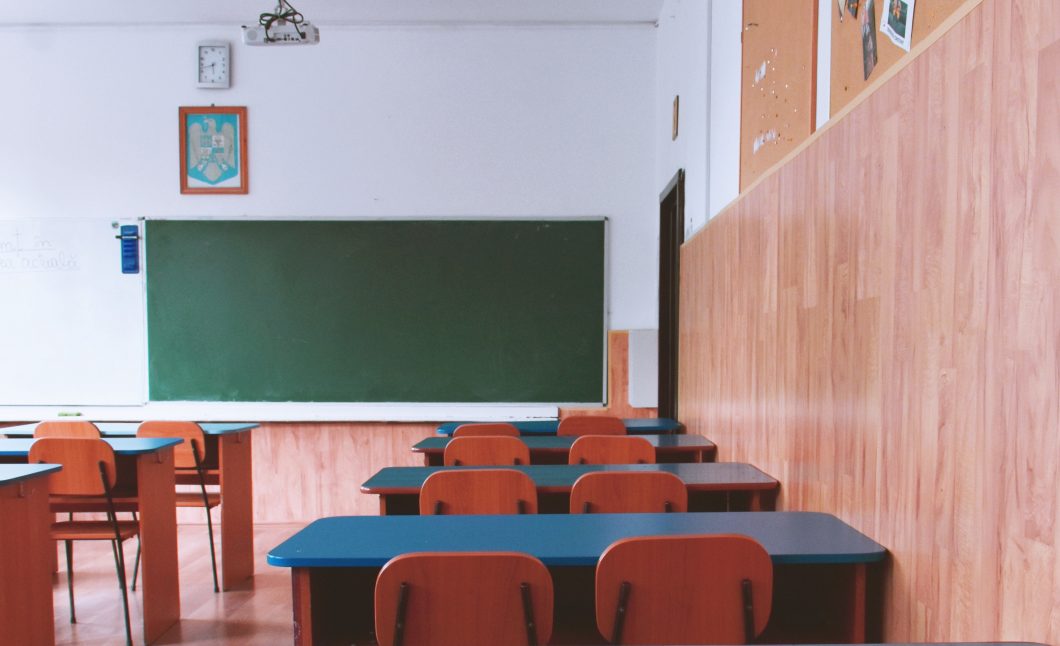Because of its likely rebuff to a key progressive principle, Espinoza is potentially the most significant Supreme Court case this term.
Why the Religion Cases Matter Most
When I was searching for a private school for my daughter in Chicago, I was amazed at some of the leftist indoctrination on display in some classrooms. At one of the most established schools in the city, the ABC book most prominently displayed was A is for Activist, which, as its title suggests, offers a catechism for social justice toddlers. (I was especially amused by “N is for No,” a word I have never had trouble eliciting from my daughter.) In the classroom at another one of the most established schools hung large rainbow pennants and a Black Lives Matter flag. I welcome debate even among primary school students about the social issues of the day, but this was a classroom for three-year-olds! The tour leader of the first school led her talk with a long mantra of diversity and social justice. Far more time was used to discuss these matters than reading, writing, and arithmetic.
In contrast, the school that was most focused on imparting values of individual responsibility was a Catholic school. Unlike at the established secular schools, there were no visible markings of faith, at least in the lower grades. The tour leader emphasized that the school tried to inculcate values of dignity, respect, and individual responsibility. One did not have to be a Catholic or indeed religious at all to recognize that this school was far more focused on the development of the individual child than advancing a social agenda. The Catholic school was more likely to advance the Enlightenment values that were at the foundation of the nation. It was the two secular private schools that preached a zealous dogma.
We were searching for a private school because the Chicago public schools provide a notoriously poor education. They have discipline problems in the classroom. Their teachers often go on strike while claiming that their labor activism is all about helping children. And their political culture surely resembles the woke private schools we visited. Even before the current political stirs, the ideology of the typical public school has been well-described as “a vaguely leftish stew of environmentalism, moral relativism, and gender . . . egalitarianism.”
The constitutional religion cases decided this term are the most practically important of all of the term’s cases, precisely because they will improve the ecosystem of K-12 education both by boosting competition to public education and forcing the inclusion of more private schools with traditional values in that competition. They will allow more parents to do what we are trying to do for our daughter—get an education that provides both deep knowledge and sound values. Nothing is more essential to our nation than that we sustain schools that will compete against the monolithically left-liberal educational establishment for the minds of the next generation.
The first of these cases, Espinoza v. Montana Department of Revenue, offered a challenge to a so-called Blaine Amendment that prevents any aid going to religiously sponsored institutions. In a 5-4 decision, The Court held that such a state constitutional amendment amounted to discrimination based on the religious status of the institution and thus violated the Free Exercise Clause.
Blaine Amendments naturally reduced the interest of religious institutions in lobbying for school choice programs.
The decision is significant because such an amendment, in one form or another, exists in more than 30 states. These amendments on their face exclude religious schools, like the one I considered in Chicago, from participating in school choice programs that would defray the cost of attending them. Moreover, because there are more religious than secular private schools in the country, the amendments exclude the schools that can reach the most children. Because religious schools, being subsidized by the faithful, are generally less expensive than secular private schools, the excluded schools also enroll more children of modest means. (The Catholic school we visited cost less than half of the amount charged by the established private schools.) And finally, as my experience shows, religious schools are more likely than elite private schools to provide a traditional education that is not an indoctrination into the social justice creed of the day.
Thus, Espinoza will immediately result in more sound education for more children, particularly those of modest means in existing school choice programs that previously excluded schools run by religious institutions. Even better, the decision will result in more school choice programs. Blaine Amendments naturally reduced the interest of religious institutions in lobbying for school choice programs in which they could not participate. But now religious schools can band together with secular private schools to create a coalition to press for school choice.
In Our Lady of Guadalupe School v. Morrisey-Berru, the Court held the state could not apply its employment discrimination laws to those teaching religious subjects in religious schools. As Rick Garnett nicely put it at this site, the Court made clear that “questions about religious institutions’ religious teachings, and teachers, belong to the church and not the state.” Whether the church sponsoring the school called them “ministers” was irrelevant. So long as they were furthering the school’s religious mission, it was the church institution that should determine the parameters of their employment.
Our Lady of Guadalupe prevents the state from impeding schools in the transmission of their values by controlling their choice of personnel. Otherwise, states could require schools to hire those whose lifestyles or views outside of class made a mockery of their teaching in class. Nor will states be able to condition their school aid on a commitment by religious schools to hire those who would undermine their mission. The doctrine of unconstitutional conditions—the rule that the state cannot condition funding on compliance with rules that it could not constitutionally impose—directly prevents that stratagem.
To be sure, some states may still try to put obstacles in front of religious schools. As Mark Movsesian notes at First Things, one side of our current culture wars is not enthusiastic about robust religious freedom. Espinoza held that it was unconstitutional to discriminate against religious schools on the basis of religious status. But it left open whether or how far the state could discriminate on the basis of religious activities conducted at the school, including traditional religious teaching on morals. Thus, the Court has not yet protected the activities and curriculum that religious schools may choose to embrace.
Nevertheless, two justices, Clarence Thomas and Neil Gorsuch, have already rejected the distinction between status and activities. As Gorsuch stated in a concurring opinion in Espinoza, “The [Free Exercise] guarantee protects not just the right to be a religious person, holding beliefs inwardly and secretly; it also protects the right to act on those beliefs outwardly and publicly.” While not explicitly agreeing, Chief Justice Roberts acknowledged this view in his majority opinion.
In any event, the combination of these cases is the best news of the term that was otherwise mixed. It has become even clearer this year that the Left’s long march through our educational institutions has been bearing fruit in creating ever more politicized universities. In these cases, the Supreme Court has created the constitutional framework for a countermarch. The rest is up to state legislatures and to parents, like me.


